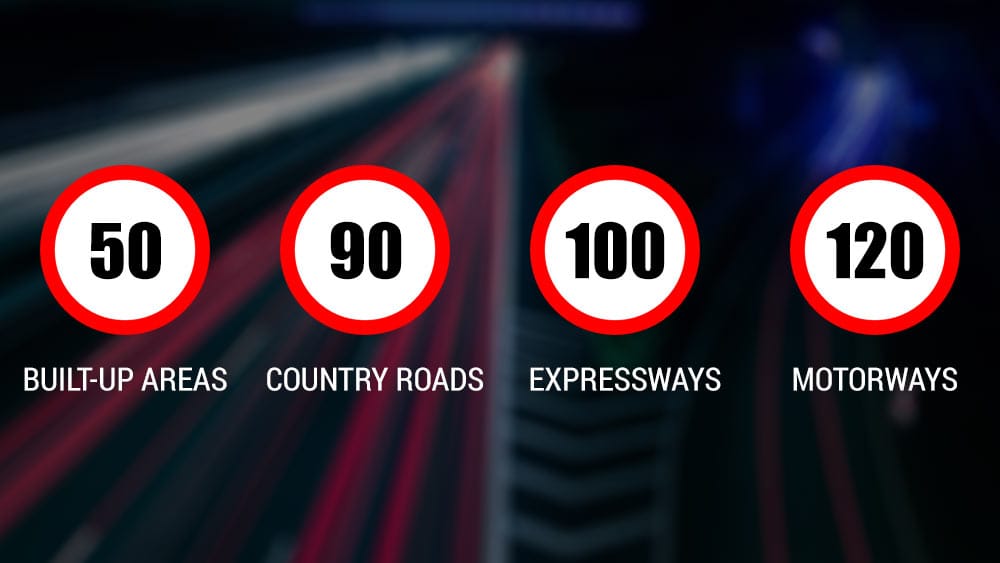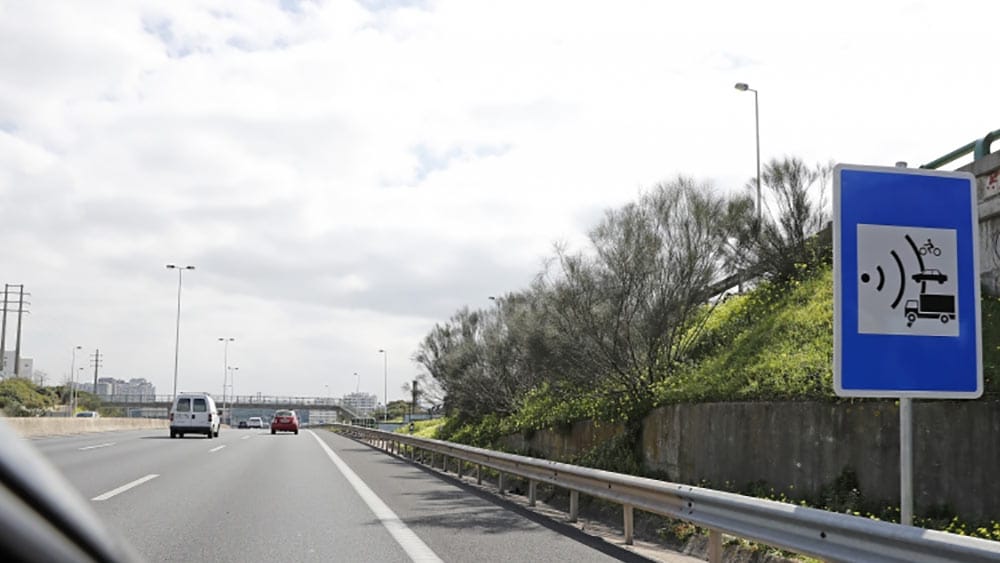Speed limits, cameras and traps
Portuguese speed limits are very similar to the rest of other continental european countries.

On cities and built-up areas the limit is 50km/h. On the other roads (like country roads) the limit is 90km/h. Expressways (two lane roads outside built-up areas) have a 100km/h limit. On motorways the limit is 120km/h.
If you have a trailer you can only drive at 70km/h on country roads, 80km/h on expressways and 100km/h on the motorway.
Trucks and buses have lower speed limits than other cars, trucks for example can only go 90km/h on the motorway.
Speed cameras
There are two types of fixed speed cameras, some check your average speed, currently only in Vasco da Gama bridge between Lisbon and Montijo, and the most usual ones that check your current speed at a specific spot, accompanied by a blue road sign (pictured bellow).

Speed cameras are named Radar or Radares (plural) in Portuguese.
These are present currently in a lot of areas and your best bet is to use an app like Waze to warn you of their presence, as sometimes the blue information sign is not visible or the speed limit of that road is not perceptible (a 3 lane road with a speed limit of 50km/h for example)
In some areas they might even be partially obscured by overgrown trees and vegetation, so be aware
Usually the speed camera is at most 200 meters to 1 kilometer after the road sign depending on the speed limit for that road.
In the case of average speed cameras there is no sign when they stop checking for you speed, in some cases can be 2km or 5km.
The ticket is sent to the car registered owner to be paid. If you don't pay the fine, the value will increase and you might have to go to court.
Speed traps
In Portugal there is a name for the speed traps placed by the police, Caça à Multa, literally means hunting for tickets.
The police might use unmarked cars on the motorways. Usually if you are speeding and see a car stay at the same speed behind you or accelerating fast to catch you, you are probably being filmed by an unmarked police car with your speed registered to be used as evidence of speeding.
They will then make you stop on the hard shoulder or at the motorway services and show you the video with your speed and your car. In these cases the fine has to be paid on the spot or your car registration will be confiscated. Usually the police will carry portable ATMs in their vehicles to facilitate immediate payment of on-the-spot fines.
There may also be unmarked cars parked on bridges above motorways, on the hard shoulder or hidden in some other places with a fixed speed camera. These work in two ways, they might take your picture and you will receive the ticket at home and pay the fine or there might be some police car / bikes a few kilometers ahead and they will then chase you and make you pay the fine on the spot.
Sometimes there will be warnings on the overhead signs at the motorway saying "Controlo de Velocidade" or "Velocidade Controlada por Radar" warning that there are speed cameras or unmarked cars patrolling that motorway.
Fines for speeding
If you go 20km/h or 30km/h (outside build-up areas) above the speed limit the fine can go from 60 to 300 Euro.
Above 21km/h to 40km/h or 31km/h to 60km/h (outside build-up areas) the fine can go from 120 to 600 Euro and your license will be taken away to 1 month up to 1 year.
Above 41km/h to 60km/h or 61km/h to 80km/h (outside build-up areas) the fine can go from 300 to 1500 Euro and your license will be taken away to 2 month up to 2 years.
If you go 60km/h or 80km/h (outside build-up areas) above the speed limit the fine goes from 500 to 2500 Euro and your license will be taken away 2 months up to 2 years.
Speed limit tolerance
The speed limit tolerance is variable by type of radar. They are applied as a percentage for speeds above 100 km/h between ± 3% to ± 10%. For speeds equal or below 100 km/h a fixed tolerance is applied between 3 km/h to 10 km/h.
Anything above 3 km/h (GPS speed) of the speed limit might warrant a ticket.